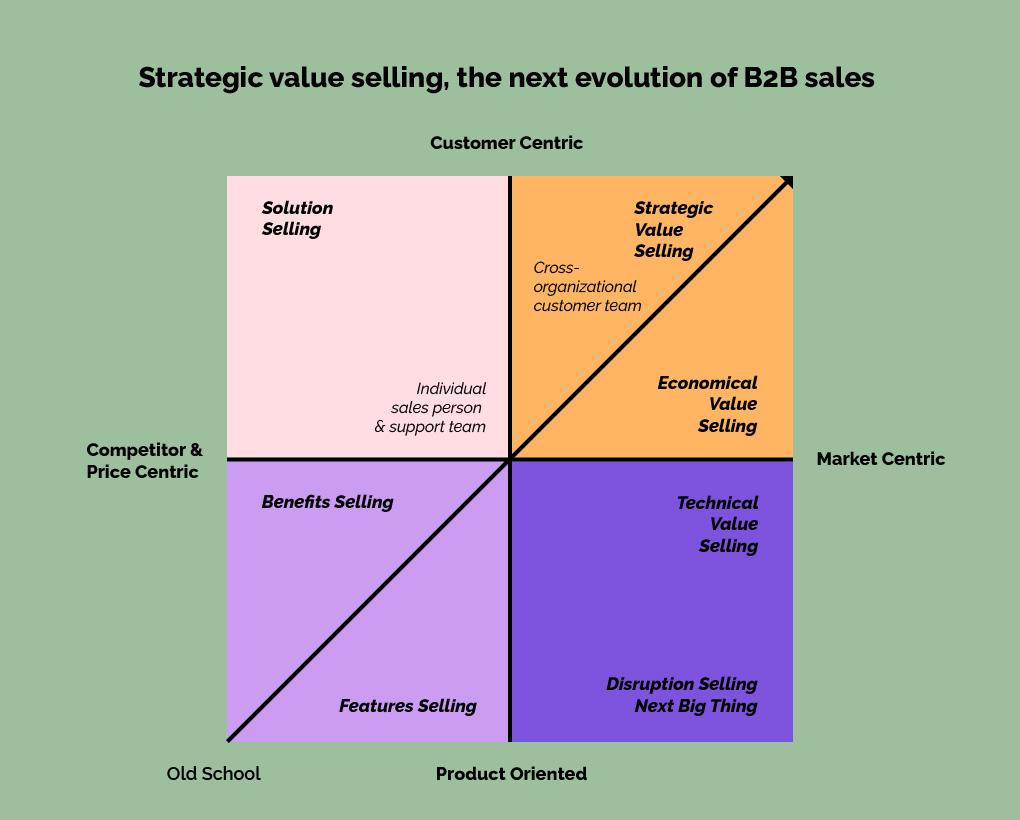02.11.2022
Strategic value selling, the next evolution of B2B sales
Pasi Pesonen, Filtrabit VP of Sales, sees that sales have changed in invisible waves during his long career as an international sales and business director.

02.11.2022
Pasi Pesonen, Filtrabit VP of Sales, sees that sales have changed in invisible waves during his long career as an international sales and business director.

This article is part 3 of 3 for the introduction of Pasi Pesonen, VP Sales at Filtrabit.
Pasi sees that sales have changed in invisible waves during his long career as an international sales and business director.
– The earlier phases are by no means obsolete but have increasingly been pushed to be a part of the domain of marketing.
I’m calling this newest development phase Strategic Value Selling and I find it a fascinating turn.

Phase 1.0
Features and benefits
We are better than the best competitors. Generic facts and figures, testimonials – but still price matters the most. Dealing mostly with the economical buyer and procurement department.
Phase 2.0
Solution selling
Fitting the existing product or service to customer need. Find the problem with the customer and boom – here is the solution you already knew to be the solution.
Consultative selling in the sense that it’s not a one-size-fits-all solution. Requires feedback from the customer.
The customer is an account. The Key Account Manager is led by turnover, profit and customer loyalty, life-cycle-value. Deal is done often between semi-strangers.
Phase 2.1
Disruption selling
To sell first the dramatic change to the old, and to paint existing solutions as outdated. Then present the next big thing or the better solution.
Phase 3.0
Value selling
Value is mostly numbers – factual benefits measured in business or function, like production objectives. But it is customer specific and well-defined. Dealing mostly with the technical buyer.
Phase 3.1
Strategic value selling
Business ethics have come to be in the center of strategic level decision-making. Goalposts are moving rapidly and new yardsticks to be measured against are erected almost on a month-to-month basis. Public opinion is also trickling ever deeper down the supply chain.
Corporate citizenship has become incredibly important.
Ignoring environmental and health related issues is a direct existential risk through being regulated, fined, sued and boycotted out of business. Not to mention being outcompeted by the more sustainable option. The ability to recruit and retain top talent hinges on it, too.
The speed of change in the business environment also means that strategies are less fixed. If an opportunity arises that not only allows the company to participate in combatting climate change but to also help their own clients do the same, it takes precedent over almost everything.
Targeting sales and tailoring the message to the strategic level decision-makers can result in incredible pull from the customer. But all the other levels need to be addressed as well. From the technical and economical buyers to the practical end user.
This requires a team and coordination in timing, in order to not lose the momentum gained at the strategic level. In the end, you might end up stepping through all the earlier phases, but it’s more effective if you do it starting from the top.